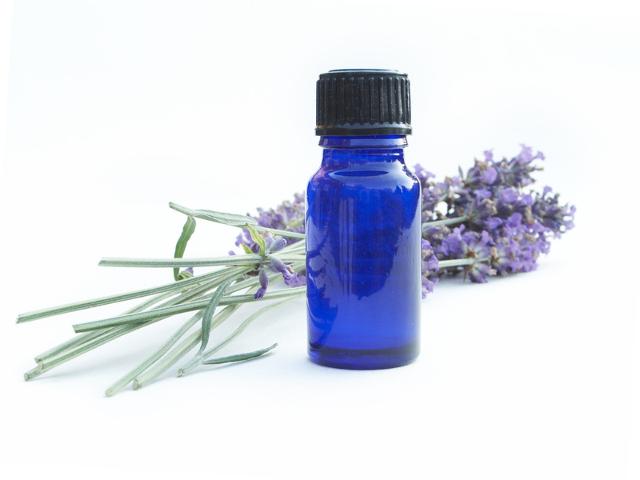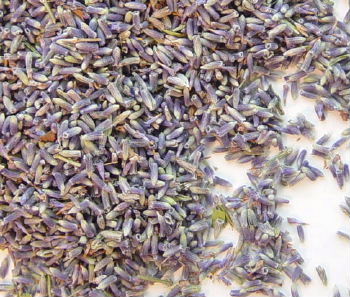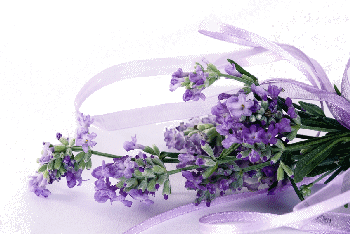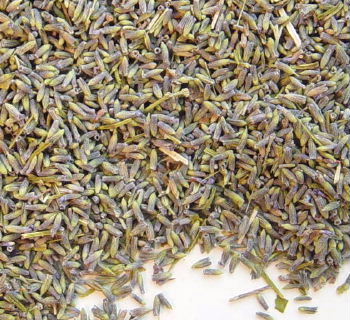Lavender
From Wikipedia, the free encyclopedia
The lavenders (Lavandula) are a genus of 39 species of flowering plants in the mint family, Lamiaceae. An Old World genus, distributed from Macaronesia (Cape Verde and Canary Islands and Madeira) across Africa, the Mediterranean,
South-West Asia, Arabia, Western Iran and South-East India. It is
thought the genus originated in Asia but it is most diversified in its
western distribution.
Botany
Description
The genus includes annuals, herbaceous plants, subshrubs, and small shrubs. The color of some lavender flowers has come to be called lavender.
The leaves are long and narrow in most species. In other species they are pinnately toothed, or pinnate,
sometimes multiple pinnate and dissected. Flowers are borne in whorls,
held on spikes rising above the foliage. Flowers may be blue, violet or
lilac. The calyx is tubular, with five lobes. The corolla is often
asymmetric.
History
Historically L. stoechas, L. pedunculata and L. dentata
were described in Roman times (Lis-Balchin 2002). From the Middle Ages
onwards, the European species were considered two separate groups or
genera, Stoechas (LL. stoechas, pedunculata, dentata) and Lavandula (LL. spica, latifolia), until Linnaeus combined them, believing the name lavandula derived from the Latin 'lavare' to wash, referring to the use of infusions of the plants. He only recognised 5 species in the Species Plantarum (1753), L. multifida and L. dentata (Spain) and L. stoechas and L. spica from Southern Europe. L. pedunculata was included within L. stoechas.
By 1790 L. pinnata and L. carnosa were recognised. The latter was subsequently transferred to Anisochilus. By 1826 de Lassaras described 12 species in three sections, and by 1848 eighteen species were known.
One of the first modern major classifications was that of Dorothy Chaytor
in 1937 at Kew. The six sections she proposed for 28 species still left
many intermediates that could not easily be assigned. Her sections
included Stoechas, Spica, Subnudae, Pterostoechas, Chaetostachys and Dentatae. However all the major cultivated and commercial forms resided in the Stoechas and Spica sections. There were four species within Stoechas (Lavandula stoechas, L. dentata, L. viridis and L. pedunculata) while Spica had three (L. officinalis (now L. angustifolia), L. latifolia and L. lanata). She believed that the garden varieties were hybrids between true lavender L. angustifolia and spike lavender (L. latifolia).
Current classification
Currently Lavandula is considered to have 3 subgenera (Upson and Andrews 2004), Lavandula, Fabricia and Sabaudia. In addition there are numerous hybrids and cultivars in commercial and horticultural usage. A number of other species within Lamiaceae are closely related (outgroups) including Ocimum gratissimum, Hyptis pectinata, Plectranthus barbatus and Tetradenia fruticosa.
The first major clade
corresponds to subgenus Lavendula, and the second Fabricia. The
Sabaudia group is less clearly defined. Within the lavendula clade, the
subclades correspond to the existing sections, but place Dentatae separately from Stoechas, not within it. Within the Fabricia clade, the subclades correspond to Pterostoechas, Subnudae, and Chaetostachys.
Thus the current classification includes 39 species distributed
across 8 sections (the original 6 of Chaytor and the two new sections of
Upson and Andrews), in three subgenera (see Table below). However,
since lavender cross-pollinates easily, there are countless variations that present difficulties in clssification.
Distribution
The native range extends across the Canary Islands, North and East Africa, Southern Europe and the Mediterranean, Arabia and India.
Because the cultivated forms are planted in gardens worldwide, they are
occasionally found growing wild as garden escapes, well beyond their
natural range. Commonly such adventitious establishment is apparently harmless at worst, but in some cases Lavandula species have become invasive; for example, in Australia Lavandula stoechas
has become a cause for concern; it occurs widely throughout the
continent, and has been declared a noxious weed in Victoria since 1920. It also is regarded as a weed in parts of Spain.
Growing lavenders
Lavenders flourish best in dry, well-drained, sandy or gravelly soils in full sun. All types need little or no fertilizer and good air circulation; in
areas of high humidity, root rot due to fungus infection can be a
problem. Avoid organic mulches; use pea gravel, decomposed granite, or
sand instead, as organics can trap moisture around the plants' bases,
encouraging root rot.
Currently Lavandula is considered to have 3 subgenera (Upson and
Andrews 2004), Lavandula, Fabricia and Sabaudia. In addition there are
numerous hybrids and cultivars in commercial and horticultural usage. A
number of other species within Lamiaceae are closely related (outgroups)
including Ocimum gratissimum, Hyptis pectinata, Plectranthus barbatus
and Tetradenia fruticosa.
Uses
The most common "true" species in cultivation is the common or English lavender Lavandula angustifolia (formerly L. officinalis). A wide range of cultivars can be found. Other commonly grown ornamental species are L. stoechas, (Spanish lavender) L. dentata (French lavender), and L. multifida (Egyptian lavender). Some species such as Lavandula stoechas are not winter hardy in temperate climates - USDA Zones 8-10).
The lavandins Lavandula × intermedia are a class of hybrids of L. angustifolia and L. latifolia.
The lavandins are widely cultivated for commercial use, since their
flowers tend to be bigger than those of English lavender and the plants
tend to be easier to harvest, but lavandin oil is regarded by some to be
of a lower quality than that of English lavender, with a perfume less
sweet.
Culinary use

A bee on a lavender flower
Flowers yield abundant nectar from which bees make a high-quality honey. Monofloral honey is produced primarily around the Mediterranean, and is marketed worldwide as a premium product. Flowers can be candied and are sometimes used as cake decorations.
Lavender flavours baked goods and desserts (it pairs especially well
with chocolate), and is also used to make "lavender sugar". Lavender flowers are occasionally blended with black, green, or herbal tea, adding a fresh, relaxing scent and flavour.
Though it has many other traditional uses in southern France,
lavender is not used in traditional southern French cooking. It does not
appear at all in the best-known compendium of Provençal cooking, J.-B.
Reboul's Cuisinière Provençale [12] In the 1970s, a herb blend called herbes de Provence usually including lavender was invented by spice wholesalers, and lavender has more recently become popular in cookery.
Lavender lends a floral and slightly sweet flavour to most dishes,
and is sometimes paired with sheep's-milk and goat's-milk cheeses. For
most cooking applications the dried buds (also referred to as flowers)
are used, though some chefs experiment with the leaves as well. Only the
buds contain the essential oil of lavender, from which the scent and flavour of lavender are best derived.
In the United States, both lavender syrup and dried lavender buds are used to make lavender scones and marshmallows.
Medical uses
Lavender is used extensively with herbs and aromatherapy.
English lavender (Lavandula angustifolia) yields an essential oil with sweet overtones, and can be used in balms, salves, perfumes, cosmetics, and topical applications. Lavandin, Lavandula × intermedia (also known as Dutch lavender), yields a similar essential oil, but with higher levels of terpenes including camphor, which add a sharper overtone to the fragrance. Mexican lavender, Lavandula stoechas is not used medicinally, but mainly for landscaping.
Essential oil of lavender has antiseptic and anti-inflammatory properties. It was used in hospitals during World War I to disinfect floors and walls. These extracts are also used as fragrances for bath products.
According to folk wisdom, lavender has many uses. Infusions of
lavender soothe and heal insect bites and burns. Bunches of lavender
repel insects. If applied to the temples, lavender oil soothes
headaches. In pillows, lavender seeds and flowers aid sleep and
relaxation. An infusion of three flowerheads added to a cup of boiling water soothes and relaxes at bedtime. Lavender oil (or extract of Lavender) heals acne when used diluted 1:10 with water, rosewater, or witch hazel; it also treats skin burns and inflammatory conditions.
A recent clinical study investigated anxiolytic effects and influence on sleep quality. Lavender oil with a high percentage of linalool and linalyl acetate, in form of capsules, was generally well tolerated. It showed meaningful efficacy in alleviating anxiety and related sleep disturbances.
Health precautions
These remedies should be used with caution since lavender oil can also be a powerful allergen.
Avoid ingesting lavender during pregnancy and breastfeeding.
In vitro, lavender oil is cytotoxic. It increases photosensitivity as well. Lavender oil is cytotoxic to human skin cells in vitro (endothelial cells and fibroblasts) at a concentration of 0.25%. Linalool, a component of lavender oil, may be its active component. Aqueous extracts reduced mitotic index, but induced chromosomal
aberrations and mitotic aberrations in comparison with control,
significantly. Aqueous extracts induced breaks, stickiness, pole
deviations and micronuclei. These effects were related to extract
concentrations.
However, according to a 2005 study "although it was recently reported
that lavender oil, and its major constituent linalyl acetate, are toxic
to human skin cells in vitro, contact dermatitis to lavender oil
appears to occur at only a very low frequency. The relevance of this in
vitro toxicity to dermatological application of Lavandula oils remains
unclear."
In terms of phototoxicity, a 2007 investigative report from European
researchers stated that, "Lavender oil and sandalwood oil did not induce
photohaemolysis in our test system. However, a few reports on
photosensitivity reactions due to these substances have been published,
e.g. one patient with persistent light reaction and a positive
photo-patch test to sandalwood oil."
Controversy over possible endocrine-disrupting activity
In 2007, a study was published in the New England Journal of Medicine which indicated that studies in human cell lines indicated that both lavender oil and tea tree oil
had estrogenic and antiandrogenic activities. They concluded that
repeated topical exposure to lavender and tea tree oils probably caused
prepubertal gynaecomastia in some boys. The Aromatherapy Trade Council of the UK has issued a rebuttal.
The Australian Tea Tree Association, a group that promotes the
interests of Australian tea tree oil producers, exporters, and
manufacturers issued a letter that questioned the study and called on
the New England Journal of Medicine for a retraction (ATTIA).
The New England Journal of Medicine has so far not replied and has not retracted the study.
Other uses
Flower spikes are used for dried flower arrangements. The fragrant, pale purple flowers and flower buds are used in potpourris.
Lavender is also used extensively as herbal filler inside sachets used
to freshen linens. Dried and sealed in pouches, lavender flowers are
placed among stored items of clothing to give a fresh fragrance and to
deter moths. Dried lavender flowers have become recently popular for wedding confetti. Lavender is also popular in scented waters and sachets.
History
The ancient Greeks called the lavender herb nardus, after the Syrian city of Naarda. It was also commonly called nard.
Lavender was one of the holy herbs used in the biblical Temple to prepare the holy essence, and nard is mentioned in the Song of Solomon (4,14)
nard and saffron,
calamus and cinnamon,
with every kind of incense tree,
with myrrh and aloes,
and all the finest spices.
During Roman times, flowers were sold for 100 denarii per pound,
which was about the same as a month's wages for a farm laborer, or
fifty haircuts from the local barber. Lavender was commonly used in Roman baths to scent the water, and it was thought to restore the skin. Its late Latin name was lavandārius, from lavanda (things to be washed), from the verb lavāre (to wash). When the Roman Empire conquered southern Britain, the Romans introduced lavender. The Greeks discovered early on that lavender if crushed and treated correctly would release a relaxing fume when burned.










